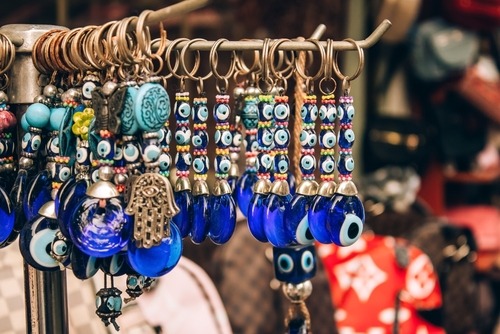
Plan a visit specifically for the purpose of exploring Barnard Castle
Barnard Castle, a market town in Teesdale, County Durham, flourished around its namesake 12th-century castle. While it gained notoriety during the pandemic as the location of Dominic Cummings’ eye test, it is also renowned for the remarkable Bowes Museum. This splendid chateau-style building was constructed by John and Joséphine Bowes, who established the museum to showcase their extensive art collection to the local community. Although they did not live to witness its public opening in 1892, their legacy endures.
The Silver Swan, a remarkably realistic 250-year-old automaton, stands as the most renowned display within the museum. To commemorate its anniversary, the museum is hosting exhibitions such as Modern Makers (until 18 June), showcasing artists from the Northern School of Art, and The Magic of the Silver Swan (until 7 January)
Within the museum, a captivating permanent art collection awaits, spanning from the 14th to the 19th centuries. It features masterpieces by renowned artists like El Greco, Goya, Gustave Courbet, and two colossal Canaletto paintings. Additionally, the museum boasts an astonishing assortment of ceramics, sculptures, furniture, and fashion. Volunteer-led guided tours are available daily, allowing visitors to delve into the highlights (tours at 11am, included in the £17.50 entrance fee, with free admission for individuals under 18)
For those seeking exploration, the castle ruins are accessible to the public, although the most picturesque views are likely from the vantage points on the southern bank of the Tees (entrance starting from £7.50). A pathway connects the castle to the County Bridge, a 14th-century structure that once marked the boundary between County Durham and Yorkshire, offering delightful riverside walks.
In contrast, located six miles away, Raby Castle stands as an impressively well-preserved medieval stronghold. Its grand towers connected by fortified walls are surrounded by 200 acres of parkland adorned with ornamental lakes and populated by herds of red and fallow deer. The castle’s art collection features religious paintings by Luca Giordano and sporting scenes by Alfred Munnings (admission fee £13).
Turner, the renowned artist, also captured the beauty of both castles, along with other notable local landmarks like Egglestone Abbey—a ruined monastery situated approximately one mile southeast of the town.
Horse Market and Market Place are bustling with a variety of independent shops, offering a treasure trove of antiques, secondhand books, handmade jewelry, and more. Alongside, you’ll find small galleries like Mouncey Fine Art and the Sandra Parker Studio. The cobblestone streets have been a hub for markets for centuries, with the Market Cross (or Buttermarket) erected in 1747 to provide shelter for farmers’ wives selling their goods. Throughout its history, the Market Cross has served as a town hall, prison, and fire station. Presently, a general market takes place every Wednesday, while a farmers’ market is held on the first Saturday of each month.

The Witham, originally constructed in 1846 and expanded with a Victorian music hall in 1860, now stands as a Grade II-listed community arts center. It hosts a diverse range of events, including theater and comedy shows, film screenings, live performances, and exhibitions. Additionally, the center organizes a monthly Northern Crafts fair, highlighting the creations of local artisans (free admission, with the next fair scheduled for June 3rd)



